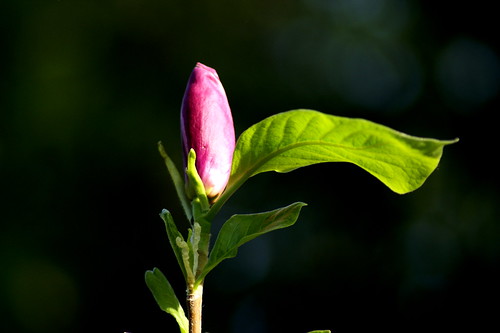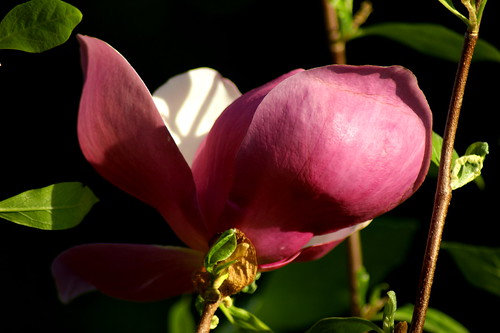Schisandra rubriflora
Image by wallygrom
Not a brilliant photo ... I went back to the garden a couple of days later, hoping to get a better picture, but for the life of me I couldn't find this plant again! It was a large shrub or small tree, growing in quite a lot of shade.
My thanks to both scott.zona and Sciadopitys for their help with the ID.
From Wikipedia -
Schisandra (Magnolia Vine) is a genus of shrub commonly grown in gardens. It is a hardy deciduous climber which thrives in virtually any soil; its preferred position is on a sheltered shady wall. It may be propagated by taking cuttings of half-matured shoots in August. Species include S. chinensis, S. glaucescens, S. rubriflora and S. rubrifolia.
It is native to East Asia, and its dried fruit is used medicinally. The berries of S. chinensis are given the name wu wei zi in Chinese, which translates as "five flavor fruit" because they possess all five basic flavors in Chinese herbal medicine: salty, sweet, sour, pungent (spicy), and bitter. In traditional Chinese medicine it is used as a remedy for many ailments: to resist infections, increase skin health, and combat insomnia, coughing, and thirst.
Over 19 species of the genus are said to be used in Chinese medicine, mostly as sedatives and tonic agents. Schisandra may also aid in the treatment of Irritable Bowel Syndrome (IBS) when combined with wormwood, ginger, buplerum, and Codonopsis pilosula. However, there is insufficient evidence to support this claim at this time.
Modern Chinese research suggests that schisandra and other lignans have a protective effect on the liver and an immunomodulating effect. Two human trials in China (one double-blind and the other preliminary) have shown that schisandra may help people with chronic viral hepatitis reports Liu KT from Studies on fructus Schizandre cinensis. Schisandra lignans appear to protect the liver by activating the enzymes that produce glutathione.
Recently, the extract of S. rubriflora, a native of the Yunnan province, was found to contain complex and highly oxygenated nortriterpenoids. The discoverers named those molecules Rubriflorins A-C.
2009-04 München 035
Image by Allie_Caulfield
2009-04 München 031
Image by Allie_Caulfield
2009-04 München 034
Image by Allie_Caulfield
2009-04 München 032
Image by Allie_Caulfield
Tidak ada komentar:
Posting Komentar